About Delft, The Netherlands
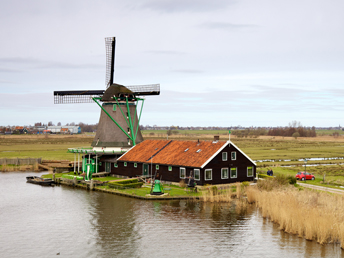 |
|
|
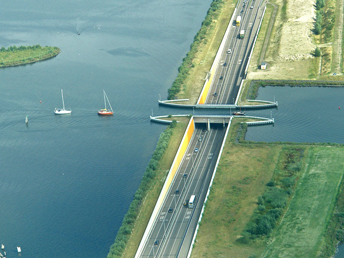 |
Seven million tourists and vast numbers of business people visit the Netherlands each year. The Netherlands is a hospitable country and easy to travel. No other country in the world is more strongly associated with water. Much of the Netherlands is a delta formed by three big rivers - the Rhine, the Maas, and the Schelde - and from ancient times ingenious solutions had to be implemented to help people keep their heads above the water. The low-lying position of the Netherlands intrigues and fascinates many foreigners. Land below sea level, what does that look like? Many imagine the "Low Countries" as marshy, half-submerged pastureland. A surprise awaits them at Schiphol, the national airport and in many other areas which although lying below sea level, impress with their beautiful flower fields. The term 'Dutch landscape' immediately conjures up images of vast polders and grassy meadows under high cloudy skies, as depicted in the paintings of so many Dutch masters. Perhaps we might also picture a landscape of lakes dotted with white sails or one of the sand dunes and broad beaches of the North Sea coast. But we would certainly not imagine the coniferous forests of the Veluwe, the heathlands of Drenthe or the hills and half-timbered cottages of Limburg. Yet these landscapes are just as 'Dutch' as the polders, the meadows, the lakes, and the sand dunes.
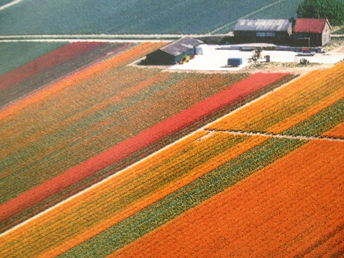 |
|
|
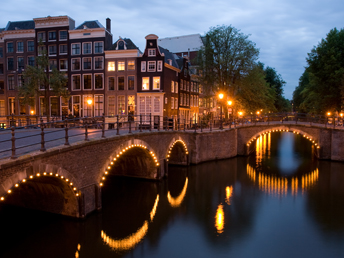 |
Further, the Netherlands is a land of flowers. People devote a great deal of attention to their gardens. Beautiful gardens can be seen in each town or village and beautiful flower fields can be seen outside the residential areas. Dutch towns and villages are just as efficiently arranged as the surrounding countryside, but what is particularly striking is the lack of any large metropolis. In the eyes of most foreigners, even the big cities are no more than provincial towns, though they do not have a strong cosmopolitan and historic character. The oldest structures in the Netherlands are in the thinly-populated province of Drenthe. They are 53 communal megalithic tombs. As for the cities, there are historic ones, such as Utrecht and Maastricht, which are among the many Dutch cities that are small according to international standards but nonetheless extremely charming and historically interesting. There are also modern cities, such as Rotterdam - the world's largest seaport, which are attractive with their modern architectures. This inspiring environment is complemented by many prestigious universities, including the three Dutch technical universities, namely Delft University of Technology, University of Twente, and Technical University of Eindhoven.
 |
|
|
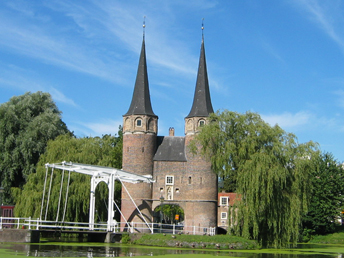 |
Delft is more than 750 years old. The city owes its name to the world 'delving', digging the oldest canal, the Oude Delft. Delft is known for its historic town centre with canals, Delft Blue pottery, the Delft University of Technology, painter Johannes Vermeer and scientist Antony van Leeuwenhoek, and its association with the royal House of Orange-Nassau.
From a rural village in the early Middle Ages Delft developed to a city, that in the 13th century (1246) was granted a city charter by the Count of Holland and became the City of Delft. In 1581 Delft became the de facto capital of the newly independent Netherlands, as the seat of the Prince of Orange.
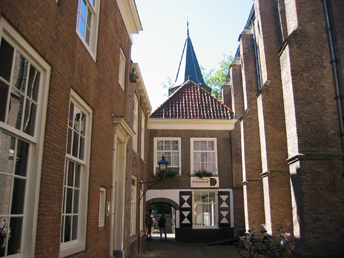 |
|
|
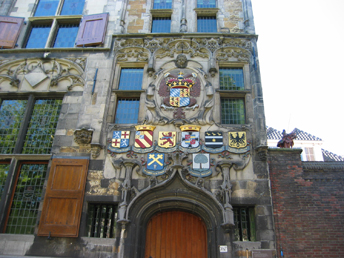 |
On January 8, 1842, King Willem II founded the 'Royal Academy for the education of civilian engineers, for serving both nation and industry, and of apprentices for trade'. The Academy also educated civil servants for the colonies and revenue officers of the Dutch East Indies.
An Act passed on May 2, 1863, imposing regulations on technical education as well as bringing it under the influence of the rules applying to secondary education. Then, on the 20th of June, 1864, a Royal Decree was issued, ordering that the Royal Academy in Delft be disbanded in order to make way for a new 'Polytechnic School'. The School went on to educate architects, and engineers in the fields of civil works, shipbuilding, mechanical engineering and mining.
On May 22, 1905, an Act was passed, acknowledging the academic level of the School's technical education - it became a 'Technische Hogeschool', or an 'Institute of Technology'. Queen Wilhelmina attended the Institute's official opening ceremony on July 10, 1905. The Institute's first Rector Magnificus was the professor of hydraulic engineering ir. J. Kraus. The Institute was granted corporate rights by an Act passed on June 7, 1956.
It was an Act which took effect on 1st September, 1986, that officially transformed the Institute of Technology into Delft University of Technology, also known as 'TU Delft' (from the Dutch name Technische Universiteit Delft). Currently TU Delft, as one of the most prestigious technical universities of Europe, cooperates with many other educational and research institutions, both in the Netherlands and abroad. The high quality of research and teaching at TU Delft is renowned. TU Delft has numerous contacts with governments, trade associations, consultancies, industry and small and medium-sized companies. It is hence a great honor for the ICTRS Community to have the sixth edition of its annual conference hosted by Delft University of Technology.
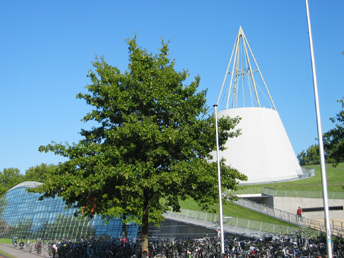 |
|
|
 |
It is easy to reach Delft. Schiphol Airport (http://www.schiphol.nl) is among World's busiest and best serviced airports. From there, one could enjoy the excellent Dutch railway service - NS (http://www.ns.nl); a trip from Schiphol to Delft would take around 40 minutes. If one goes for renting a car at Schiphol, it would take less than an hour driving to Delft. Delft is ideally located, between The Hague and Rotterdam, and close Amsterdam.